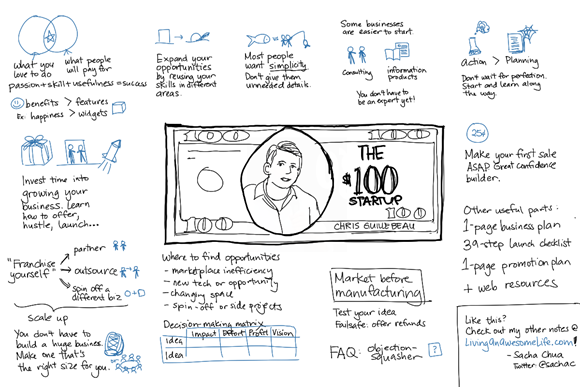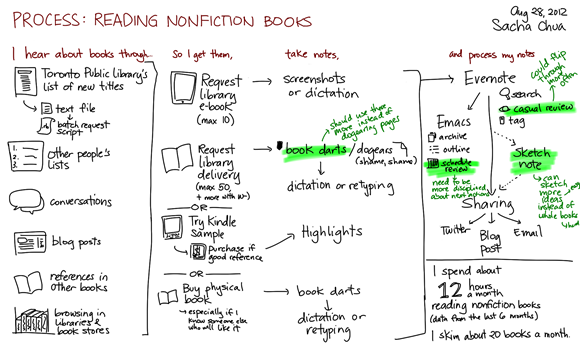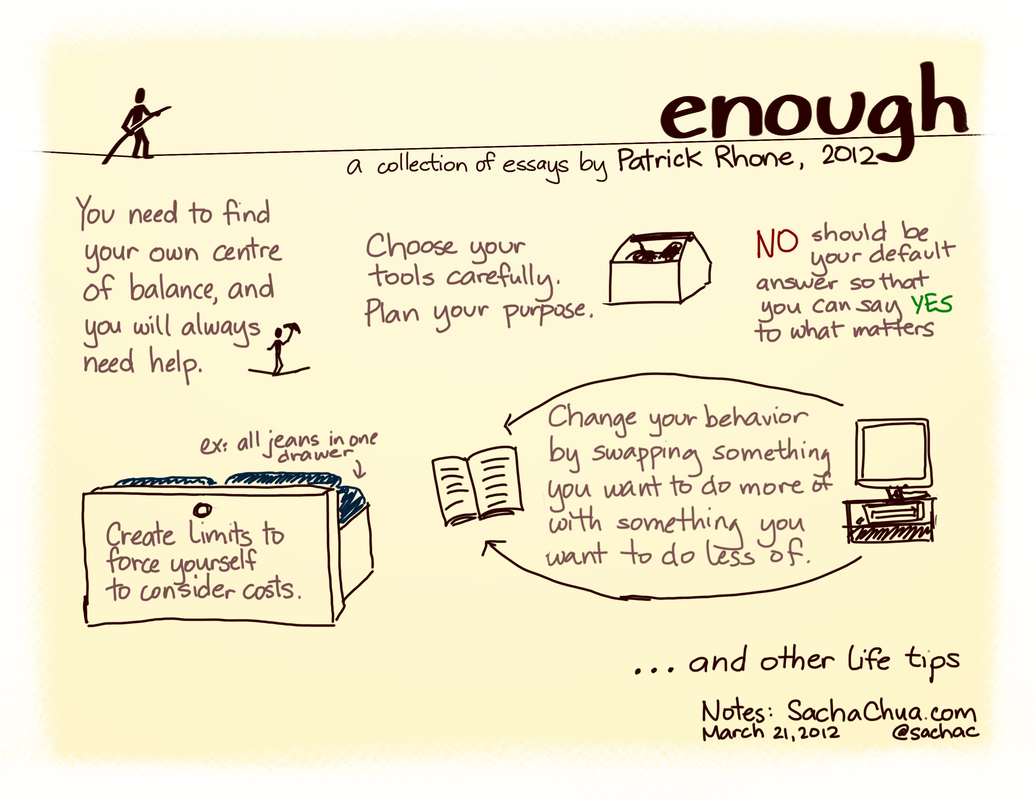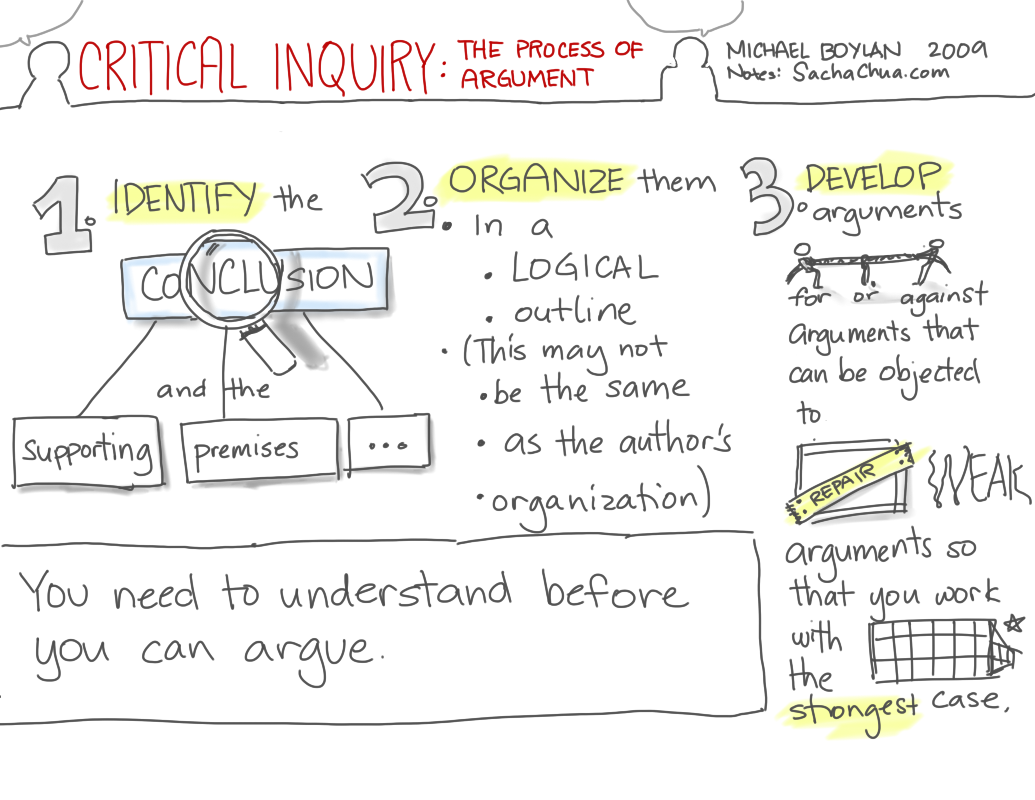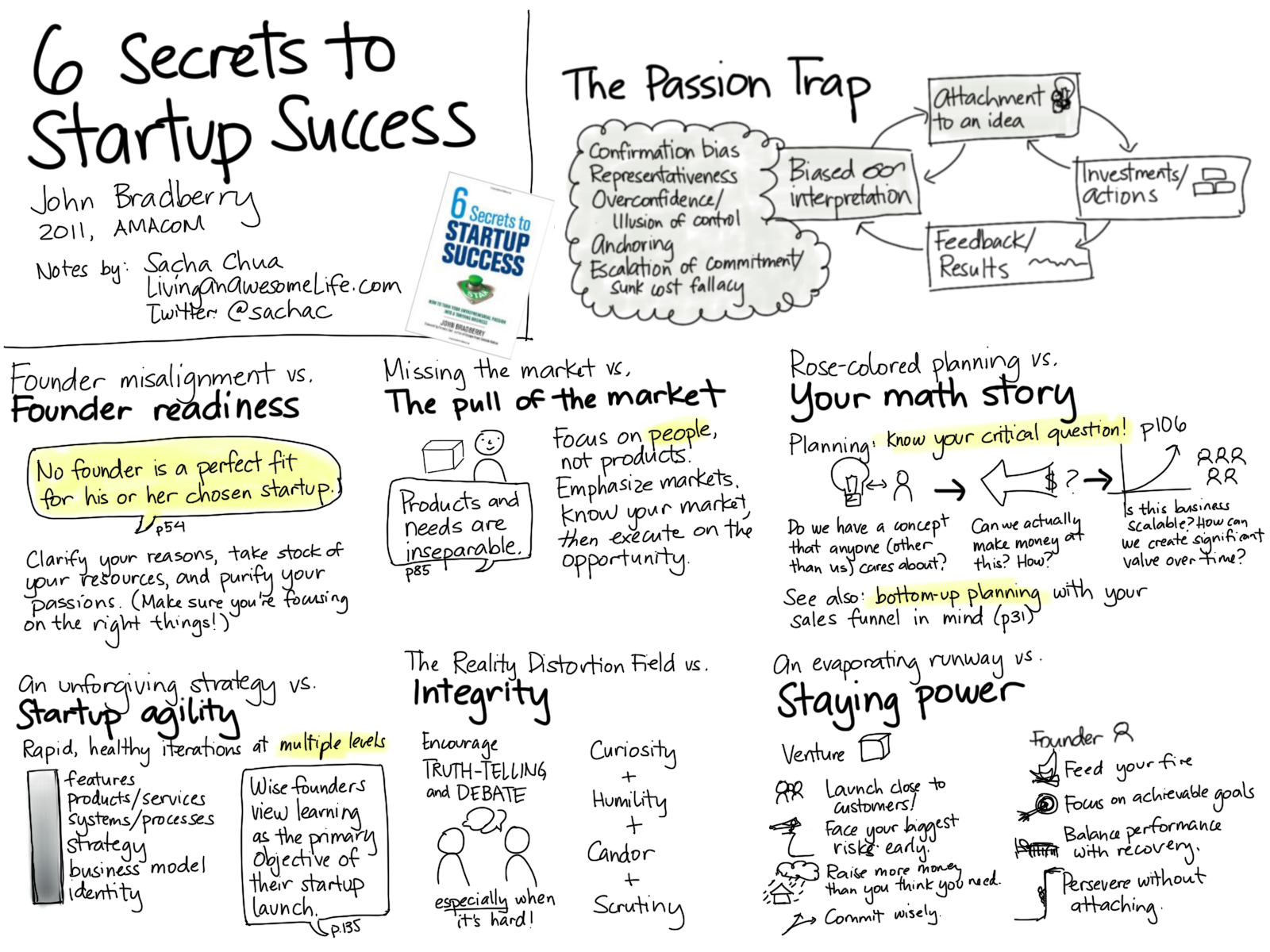How I read books and do visual book reviews
| readingBakari wanted to know how I did my visual book reviews. Here’s how!
Over the past year, we’ve checked out an average of 13 items a week from the Toronto Public Library each month. I select books by browsing through the library’s new releases list or searching through their collection for a particular topic I want to focus on. I sometimes reach out to publishers and authors if I hear of an interesting book (particularly books related to visual thinking), and some reach out to me because they’ve seen some of my visual book reviews. In addition, I receive one or two books a month for review.
I skim through most of the books I get, since many repeat things I’ve already read in other books. When I’m conscientious, I mark pages with book darts or strips of paper. Sometimes I just dogear them and then donate to the library to make up for my guilty conscience. I don’t write in books, especially not library books. I prefer to keep highlights on my computer, where I can search them and reuse them easily.
Reading non-linearly helps me save time by jumping to chapters that interest me the most. From time to time, I come across fascinating ways to see things. I type or dictate quotes into my computer, or scan diagrams into my Evernote notebook. Then the book goes on the growing pile of things to return during our frequent library trips. (As of this writing: 3 items ready to be returned, 6 more to read by Saturday, 44 items currently checked out.)
For books that I want to share or deeply understand, I make a visual book review: a one-page summary of the key points from a book, based on what I think of it and what I want to remember. Visual book reviews help me:
- Pay more attention to a book
- See the structure of a book in better detail than a table of contents does
- Easily talk about books with other people, because I can share the visual book review with them
- Quickly review the books I’ve read
- Build my visual vocabulary and practise my sketchnoting skills with good material
- Get better at summarizing ideas in a few words or an image
- Give something back to the authors whose books I enjoy
- Attract publishers and authors who are working on books that I might learn a lot from so that they send me a review copy
I usually draw while reading the book for the first time. I’ve tried drawing on my second read-through, but I find many books boring if read again so quickly after the first time. I read the table of contents to get a general sense of how the book is laid out. Then I read through the book, holding the book open (or paging through it on my tablet if I’m reading an e-book, which I’m coming to prefer) while writing down key points in my tablet PC and doodling little illustrations. I erase, resize, and move things around as needed so that there’s space for everything I want to remember. Then I post the notes to my blog and add them to my public Evernote notebook so that I can find them again. I release my book reviews under the Creative Commons Attribution License (with attribution baked into the image! =) ) so that people can freely share them.
Many people don’t have the time or inclination to read. I read a lot. I enjoy reading, and it helps me learn so much more than I could have figured out on my own. I’m so lucky to be in a city with an amazing public library system, and to be alive in the age of the Internet and e-books. If I can learn as much as possible and share as much as I can (perhaps in more useful or engaging ways than a book that needs an hour or two to read), then that’s another way I can give back to the world. And I learn a ton along the way!
Related:

